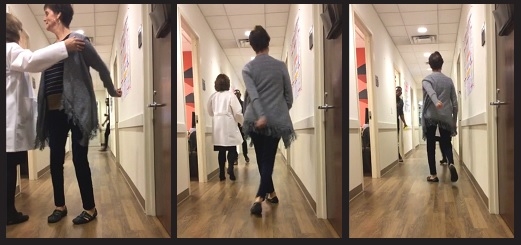Lynda McKenzie was in her early 30s when she started noticing some odd physical symptoms. She was a single mother of two who owned a small crafts shop in Milton, Ontario, and everyday tasks at home and work were becoming more challenging. “My right leg was dragging, I had a slight tremor and my voice was getting softer,” says McKenzie. “Also, my writing was getting smaller — it seemed like messages weren’t going from my brain to my hands.”
During the transplant study, which ran from May 1995 to January 1998, Dr. Freed and his colleagues surgically implanted fetal brain tissue into patients’ brains in the hope of replenishing their levels of dopamine — a chemical that helps coordinate the body’s movements, but which is depleted by Parkinson’s. Overall, within a year of the procedure, the patients’ dopamine levels did increase. Unfortunately, though, the transplants didn’t offer the cure that McKenzie and her fellow patients had wished for: their symptoms relented for a while, but ultimately returned. Their disease continued to progress, albeit more slowly than it might have otherwise.
The patients Dr. Henchcliffe met with had been diagnosed at an early age and had been living with Parkinson’s for a long time — at least 28 years and as long as 36 — which is unusual among patients with early Parkinson’s diagnoses, who usually have a decreased life expectancy compared to those diagnosed later in life. In the three who received PET scans, her team found that the implanted fetal tissue had survived in its intended location in the brain. What’s more, she says, “the patients’ levels of dopamine were a lot more robust than what you’d expect at this late stage of Parkinson’s disease.” That increased dopamine had had a generally helpful effect: their symptoms, while serious, were markedly less severe than what doctors would have anticipated in the normal course of Parkinson’s. “They were functioning at a higher-than- expected level,” Dr. Henchcliffe says, which was a big surprise. “They took comparatively few medications, and two were walking without walkers and living independently.”
While Dr. Freed’s study did not ultimately revolutionize Parkinson’s treatment, Dr. Henchcliffe says, it offers valuable insights into how today’s neuroscientists may design cell transplant therapies, and suggests that tissue transplants that deliver dopamine into the brain could provide a durable, long-lasting treatment for Parkinson’s disease. Building on the promise of the long-term results of Dr. Freed’s study, Dr. Henchcliffe is eager to explore — with a team of collaborators at Weill Cornell Medicine and Memorial Sloan Kettering Cancer Center — how human embryonic stem cells could improve the lives of Parkinson’s patients: Dr. Henchcliffe believes that dopamine neurons derived from the stem cells would more accurately and effectively promote the brain’s production of dopamine. “Pharmaceutical treatments can add dopamine to the brain, but they aren’t perfect: they require people to take medication for life, and they have limitations over the long term,” says Dr. Henchcliffe. “A transplant approach, on the other hand, could get to the root of the problem.”The added dopamine did not appear to help alleviate all symptoms of Parkinson’s, however, just some of the lost motor skills; some patients still experienced the depression, dizziness on standing and drooling commonly seen in the disease. And Dr. Henchcliffe also found that the added tissue had caused some adverse effects normally only associated with very late stages of Parkinson’s and with overdoses of some Parkinson’s medications. Three patients were suffering from involuntary jerking movements, called dyskinesia, and one developed oral-facial dystonia — a lack of control over the mouth, tongue and jaw muscles that caused grimacing.
- Erica Cirino
This story first appeared in Weill Cornell Medicine, Vol. 16. No. 1.

